Onsen, or public baths, are a staple of Japanese culture and an experience that should definitely be on your itinerary. This guide covers essential onsen etiquette and everything else you need to know about visiting hot springs in Japan so you feel totally prepared.
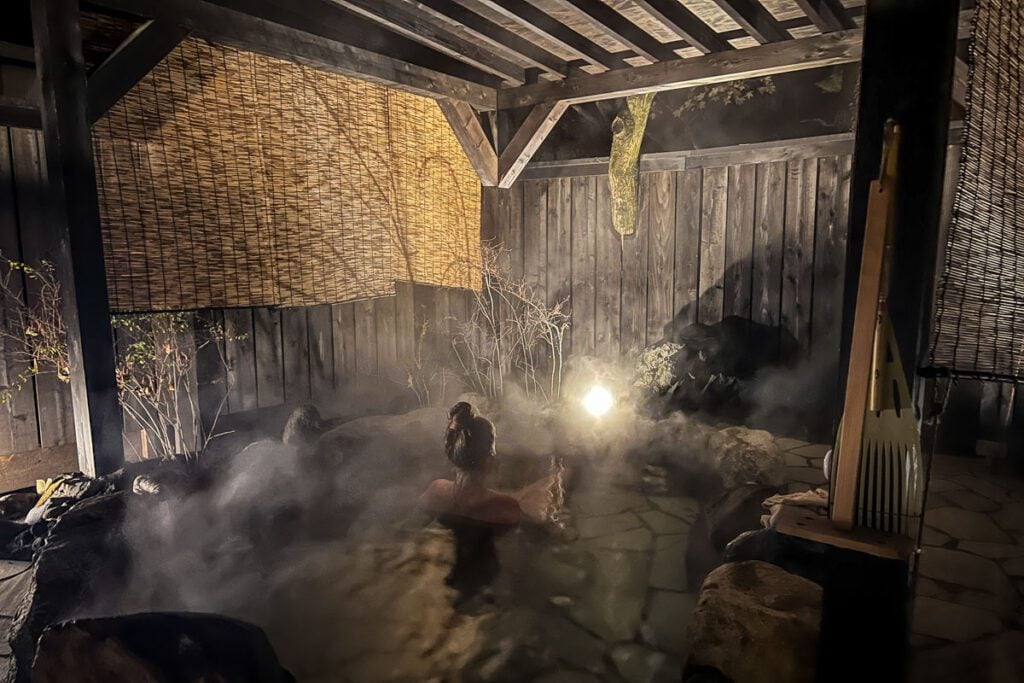
Confession: we’re kind of addicted to hot springs. We’ve taken steamy dips all over the world—USA, Iceland, and New Zealand to name just a few—but Japanese onsen are truly something special.
Imagine sitting in a steaming pool of mineral-rich water, surrounded by forested hills and jagged mountain peaks. A crisp breeze grazes your cheeks as your body melts into the natural warmth.
Oh, and one more thing – you’re naked.
Soaking in an onsen (or several!) is one of our favorite things to do in Japan. Over 3 trips, we’ve visited public bathhouses, natural outdoor pools next to a waterfall, and private baths in rustic Japanese inns. It never gets old.
That said, navigating your first onsen visit can be intimidating – especially if you’ve never gotten naked with strangers before.
But trust me, once you get over the initial self-consciousness (and realize that nobody is looking at you), you’ll fall under the spell of this magical Japanese tradition.
Before you strip for a dip, there are some important rules you need to know. In this guide, we’re sharing all the dos and don’ts of onsen etiquette so you’ll know exactly what to expect.
Important note: This article is written from our personal experience as a cisgender woman and man. We can’t speak to the experience of transgender folks regarding onsen. If any readers would like to share their experience with us, we’d love to hear your perspective.
Onsen Etiquette Guide
What is an onsen?
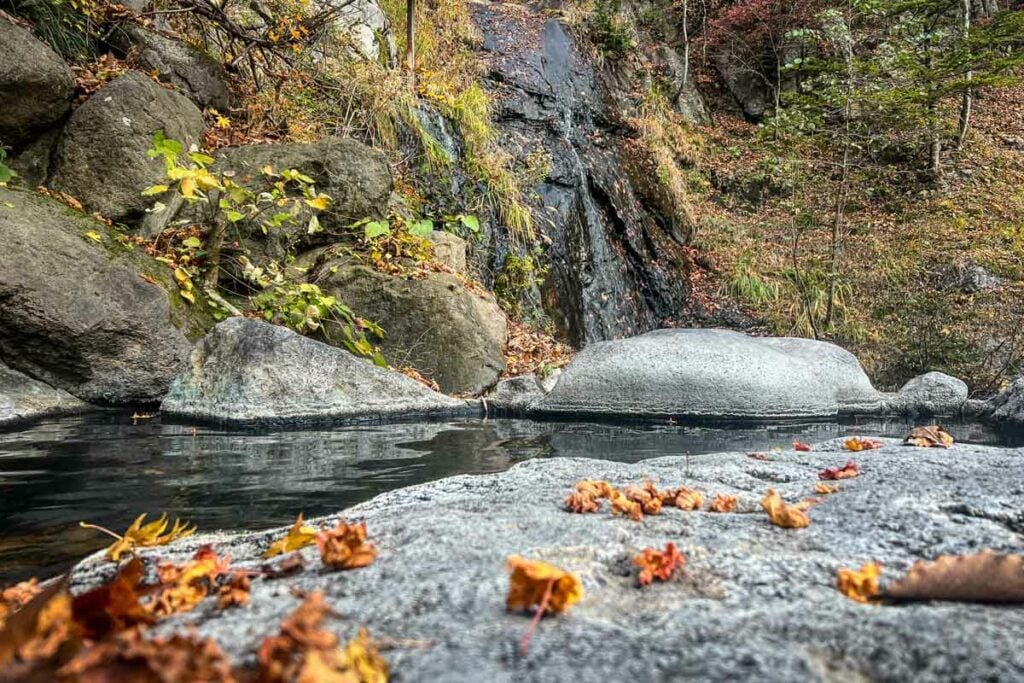
An onsen is a Japanese hot spring with a bathing facility that is naturally heated by geothermal energy.
Japan has a lot of volcanic activity, so there are thousands of onsen all around the country. There are even entire towns built around hot springs.
Types of onsen
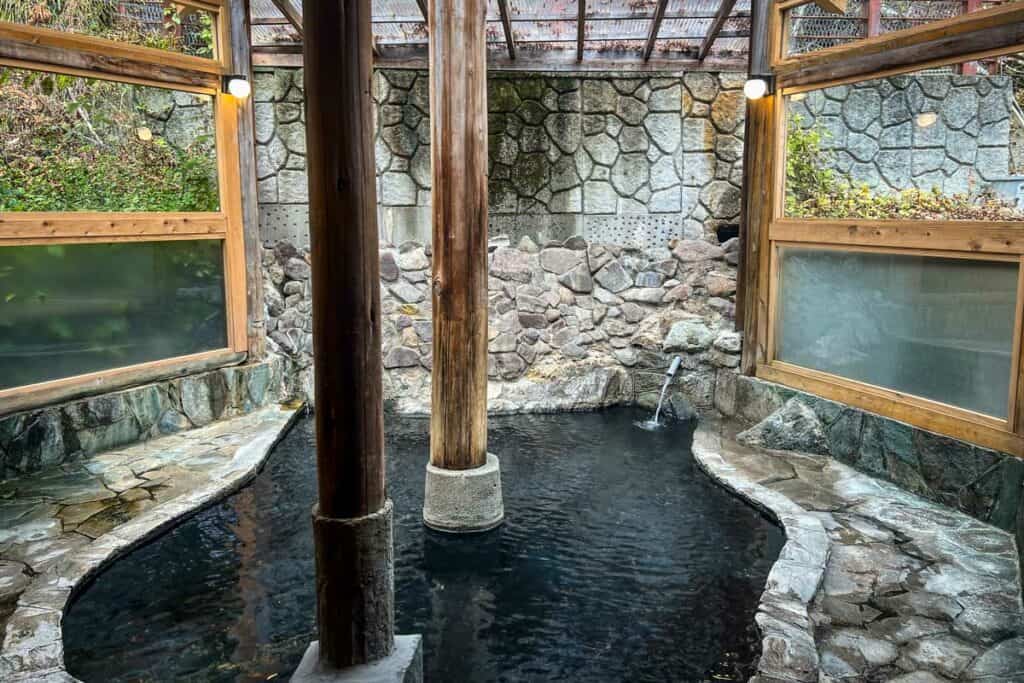
Let’s go over the different types of onsen you might find in Japan:
- Outdoor baths (rotemburo): these could be completely or partially exposed to the elements
- This is our favorite type of onsen, especially during winter in Japan!
- Indoor baths (uchiburo): the most common type of onsen
- Foot baths (ashiyu): usually free for public use*, these shallow hot springs are lined with benches where you can sit and soak your feet
- *Even free foot baths may charge a fee to rent a towel
- Gender-separated baths: the vast majority of public onsen are separated by gender
- Mixed gender baths (konyoku): a few of the more traditional or remote facilities have mixed-gender baths, some of which have robes for bathers to wear
- Private baths (kashikiriburo or kazokuburo): many ryokan and some onsen resorts offer private baths you can rent for a fee
Onsen etiquette
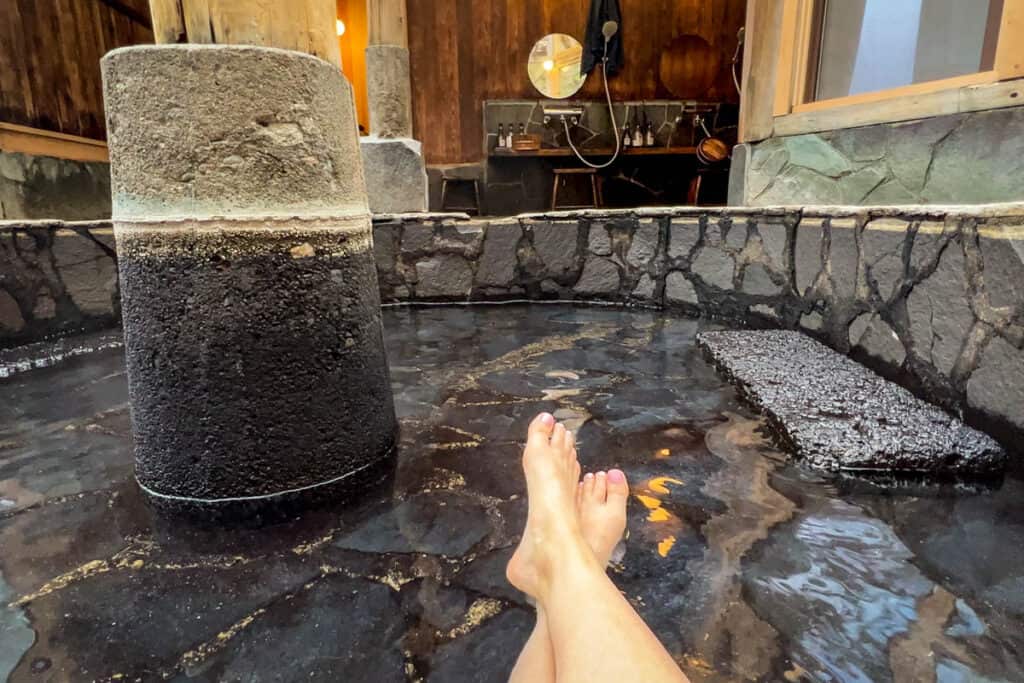
If you’re planning a trip to Japan, we highly recommend carving out time for at least one onsen experience. But before you start shedding your clothes, there are some important rules you should know regarding onsen etiquette so you don’t embarrass yourself…
1. Know the onsen’s tattoo policy
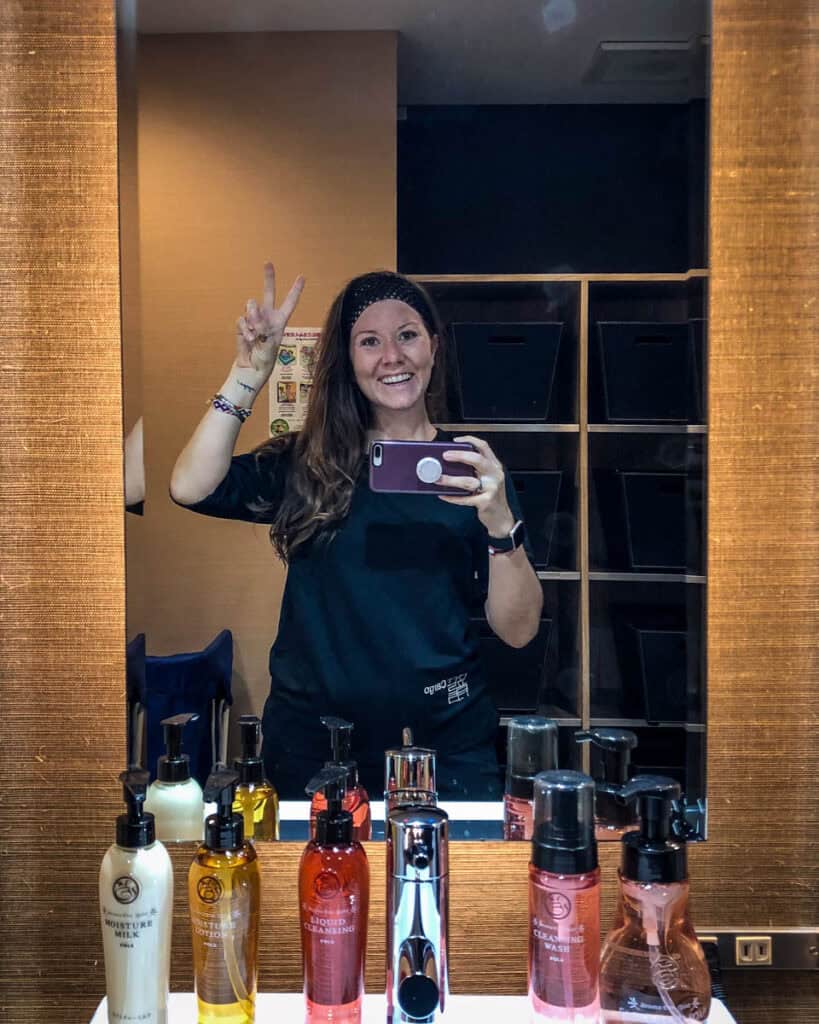
Some onsen have policies against tattoos due to their historical association with the yakuza (aka Japanese mafia). While an arguably outdated rule, it is part of onsen culture, and as a foreigner there’s not much you can do about it.
Personal experience: I’m speaking as someone who has tattoos and I have been disappointed that I can’t go to some onsen.
Before visiting, it’s essential to check the onsen’s rules regarding tattoos. If you have tattoos (yes, even if they are small!) you may not be permitted entry. In this case, choose onsen that are more accepting of tattooed guests or opt for a private onsen facility. Luckily, there are a growing number of onsen that are tattoo-friendly.
Good to know: We’ve heard of some people trying to cover up their tattoos with bandages, but in most places this is not looked upon kindly. Even if you are not reprimanded, it can be seen as disrespectful. Instead, search “tattoo-friendly onsen in [destination]” to be sure you are not being *that* kind of tourist.
Confused about whether an onsen allows tattoos? Go to Google Maps and find their location. Scroll down to the reviews and type “tattoo” in the search bar. This will bring up any reviews that mention tattoos, and we’ve found this to be very accurate on whether or not they are allowed.
2. Shower before you get in
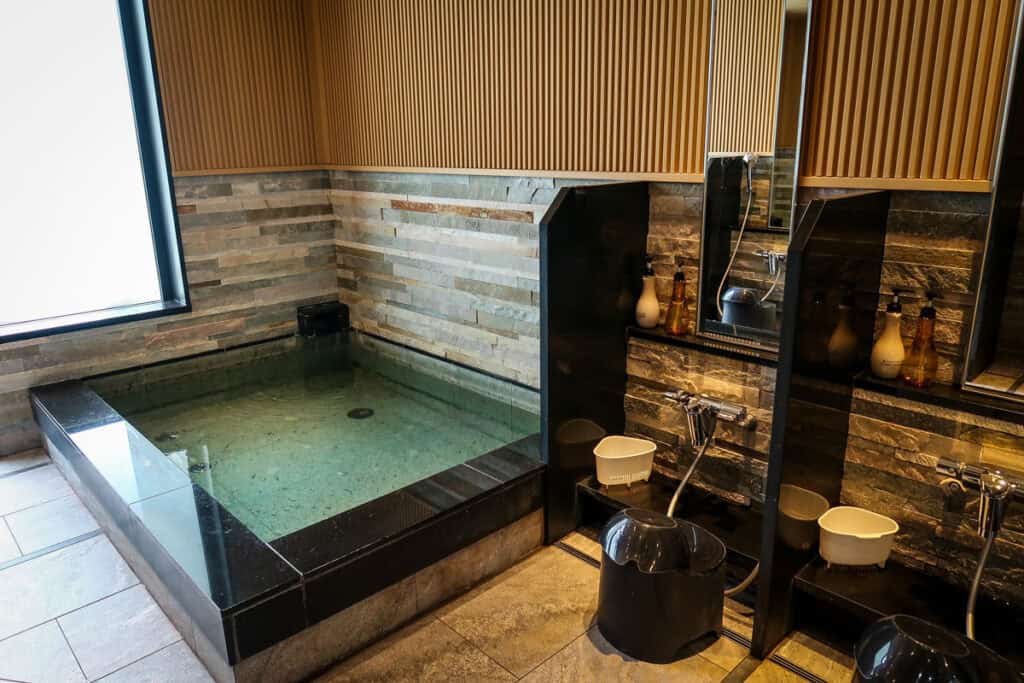
Before entering an onsen, it’s crucial to thoroughly wash and rinse off any soap or shampoo from your body. This not only ensures personal hygiene but also maintains the cleanliness of the communal hot spring water.
What to expect: Most showers at onsen are in a communal area. There is usually a small stool to sit on, a handheld sprayer, a bucket, and liquid soap and/or shampoo.
3. Do not wear a bathing suit
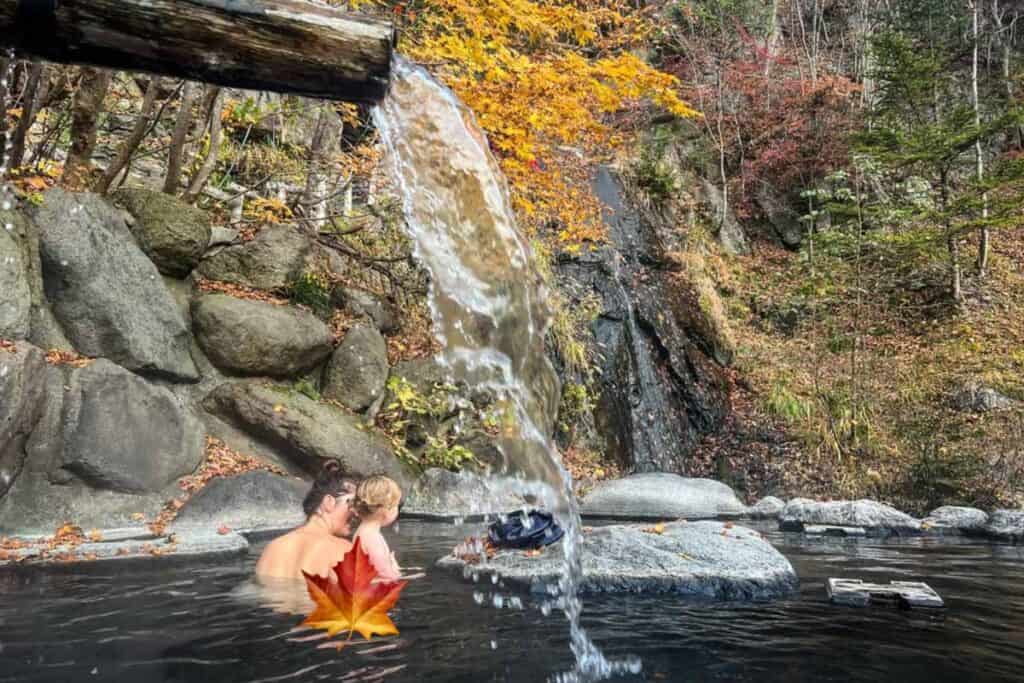
Unless otherwise noted, onsen require guests to enter without any clothing, including bathing suits. This tradition is deeply rooted in Japanese culture and allows everyone to enjoy the onsen without polluting the waters.
Many onsen are split into gendered pools or areas for this reason. And if you are shy, you can always opt to go for a private onsen, which many guesthouses offer.
4. Don’t let your towel touch the water
While in the onsen, it’s customary to keep the small towel provided for modesty purposes on the side of the bath, or if needed, folded on your head.
Avoid letting the towel touch the water, as it is considered unclean.
5. Tie up your long hair so it doesn’t touch the water

Long hair should be tied up to prevent it from touching the onsen water. This helps maintain the purity of the hot spring and ensures that everyone can enjoy a clean and relaxing bathing experience.
I personally like to pack a claw clip to wear in onsen.
6. Don’t bring your phone
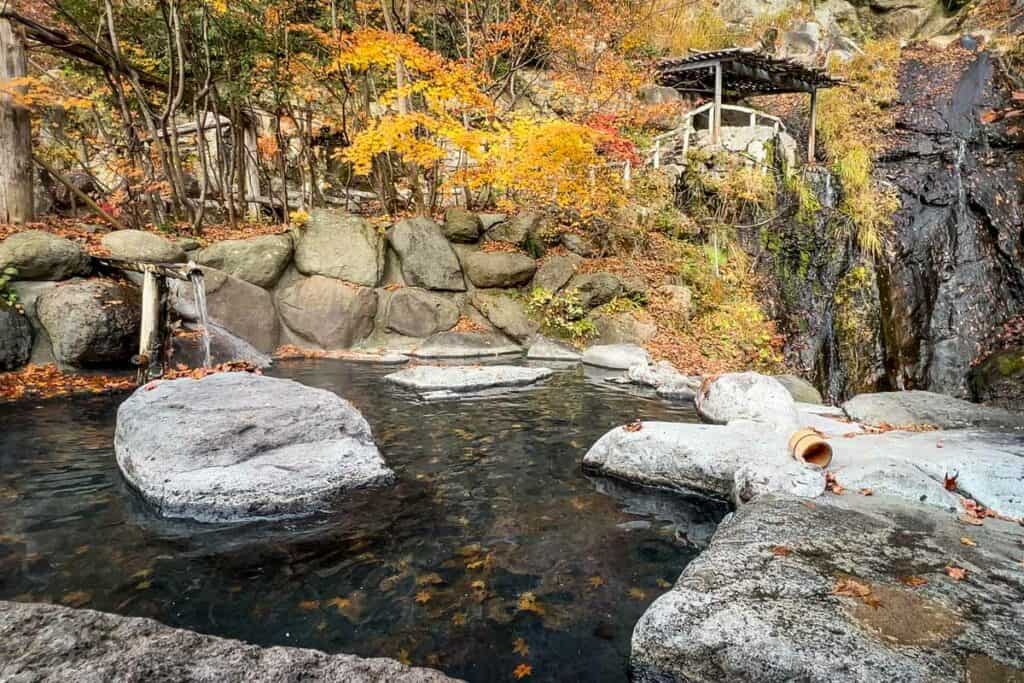
Trust me, I know how hard it can be not to capture your memories in a photo—I am a travel blogger, after all—that’s kinda my thing. But this is one experience that will need to go undocumented.
Taking photos in a public onsen is a no-no, for obvious reasons.
If you have a private onsen, then you can take photos if you want. (All photos in this article were taken when we were the only ones using the onsen.)
An onsen is, fundamentally, a place to relax, and I highly recommend using the opportunity to unplug for a while. Ditching your phone can feel as freeing as shedding your clothes!
7. Soak, don’t swim
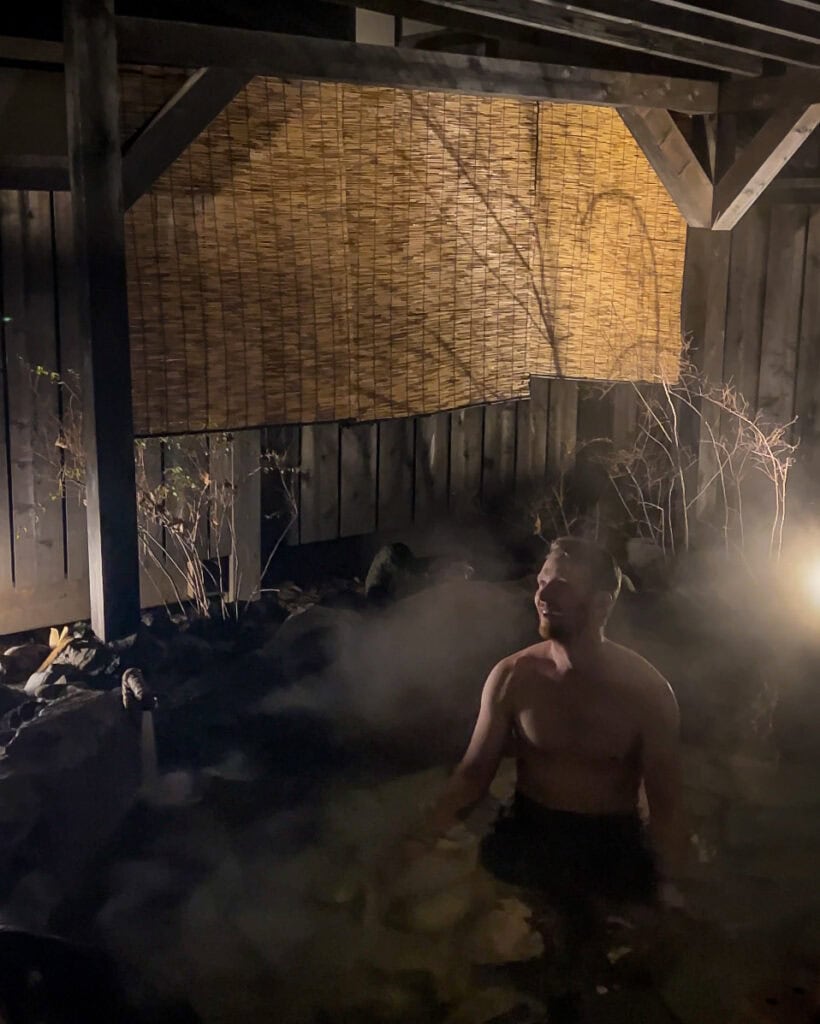
Most onsen are shallow enough to just sit in the warm water. Even in larger pools, this isn’t the time to practice your breaststroke.
8. Keep to yourself
Unlike hot springs in Iceland where it can be fun to chat with other bathers, Japanese onsen are not necessarily a place to mingle. People are here to relax, not to socialize.
What exactly can I expect at an onsen?
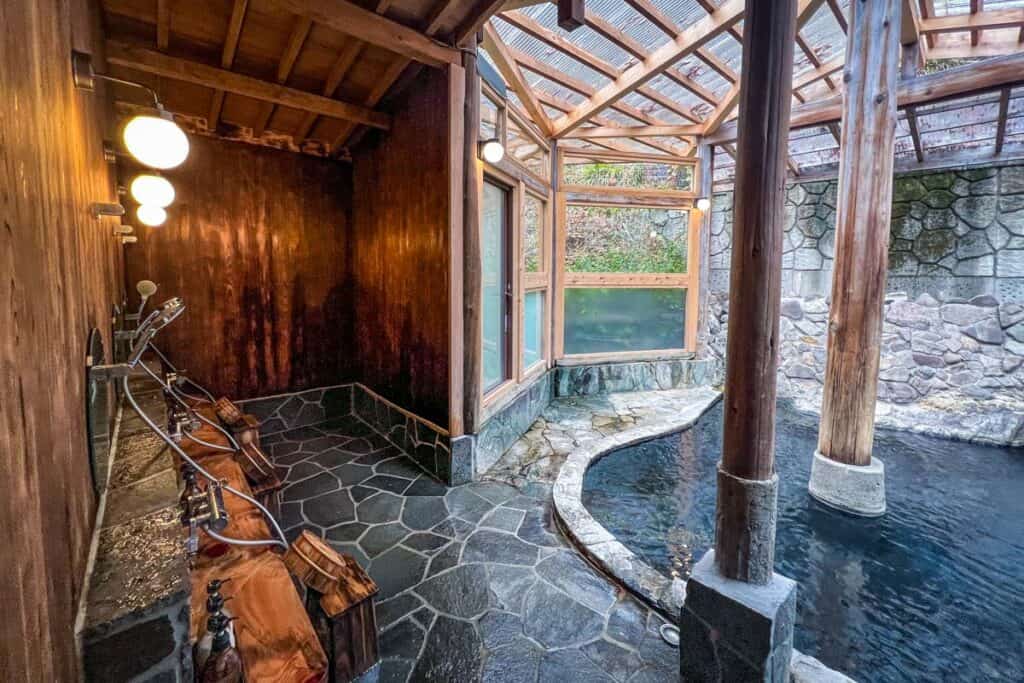
Knowing what to expect can help ease your nerves if you’re feeling a bit apprehensive about visiting an onsen for the first time. I get it!
Japan has literally thousands of onsen, so there’s a ton of variance. Let’s start with some of the things you should know, then I’ll walk you through what to expect during your visit.
Things to know about onsen
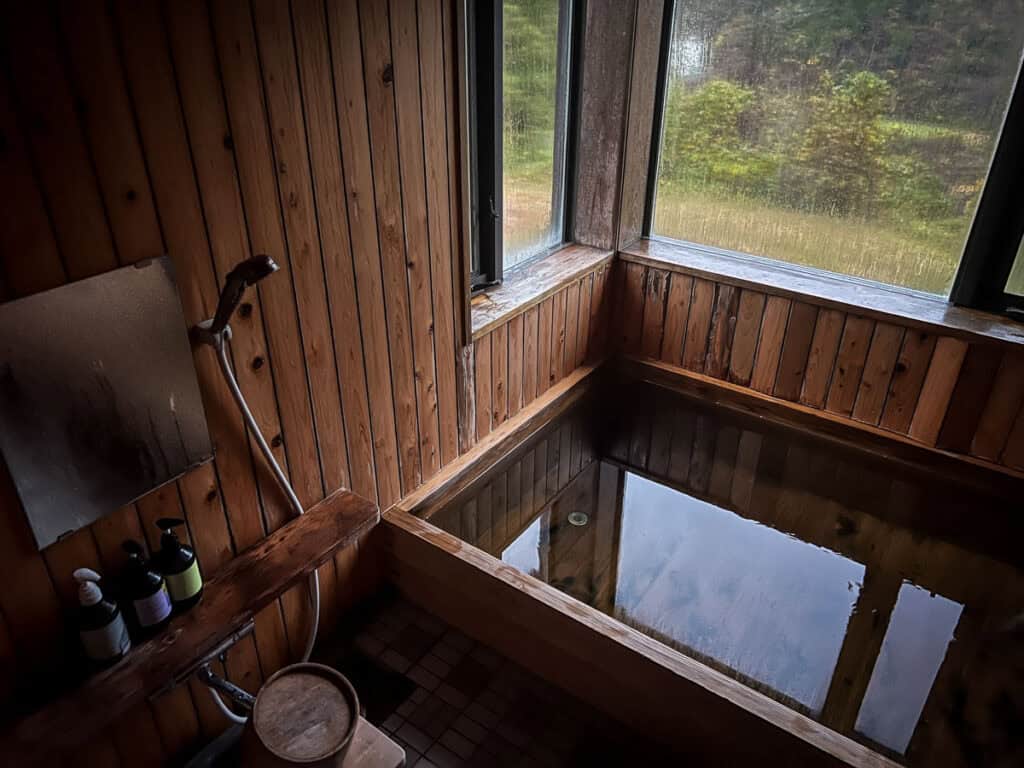
- Onsen can be indoors or outdoors.
- They may be smaller (i.e. just the pools) or part of a larger resort with additional facilities like restaurants and spas.
- Some have staff onsite, while others have vending machines where you buy tickets. There are also some “wild onsen” in the countryside that aren’t managed.
- They may be public or private. Day-use onsen are usually public, whereas private pools are typically rented by the hour.
- At most public onsen, pools and/or bathing areas are separated by gender, but there are some mixed-gender baths.
- Good to know: If you’re looking at an onsen online, be aware that the photos might be from a gendered area that you may or may not have access to. Generally speaking, women’s pools tend to have the best views.
- Hotels and ryokan (traditional Japanese inns) often have private onsen that guests can rent by the hour.
- Day use onsen and footbaths (even free ones) may charge an additional fee to rent a towel; you may want to pack a small towel or purchase one in Japan.
- Good to know: These are not the size of a regular bath towel and will not “cover up all your parts”.
- Onsen resorts often have multiple pools containing various mineral properties that are said to have different benefits, such as soothing joint pain or treating certain skin conditions.
Every onsen experience will be different—that’s part of the fun!—but here’s a general idea what a visit to a typical day-use onsen looks like:
Entry fee
There will either be a counter with a receptionist or ticket kiosk where you pay the entry fee.
Many onsen also have the option to rent a small “modesty towel”, or you can bring your own towel.
Changing rooms
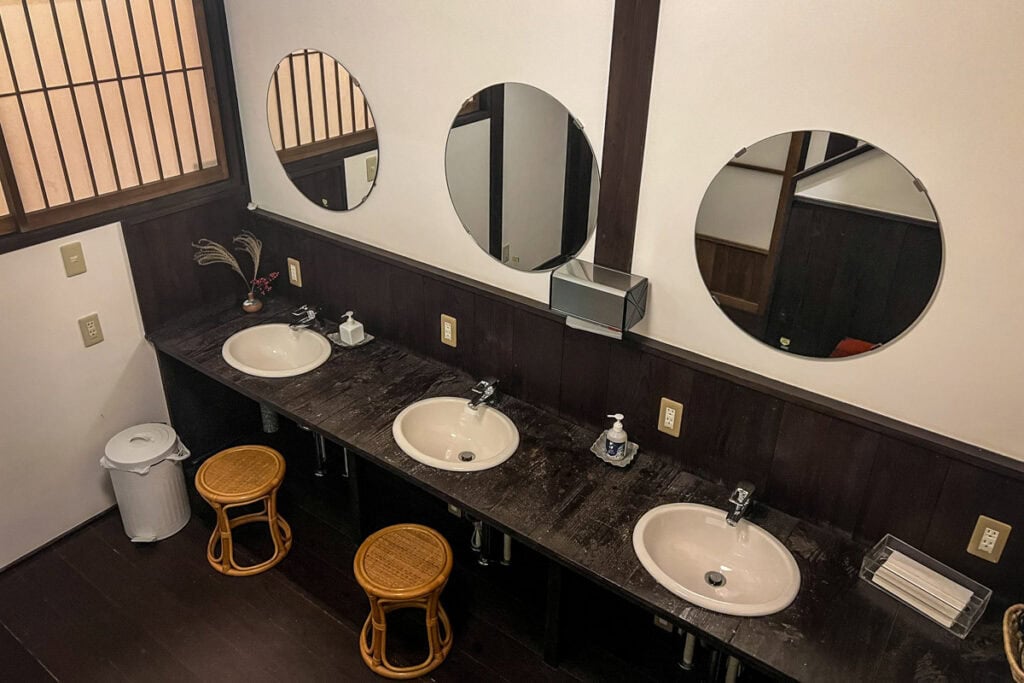
Most onsen have gender-separated changing rooms (in our experience they are separate even for mixed-gender baths). There are usually cubbies (baskets or shelves, not usually lockers) in the changing area to store your belongings.
Good to know: Japan is very safe and theft is extremely rare, so your stuff will be fine. If you’re really worried, you can leave your valuables in your hotel room.

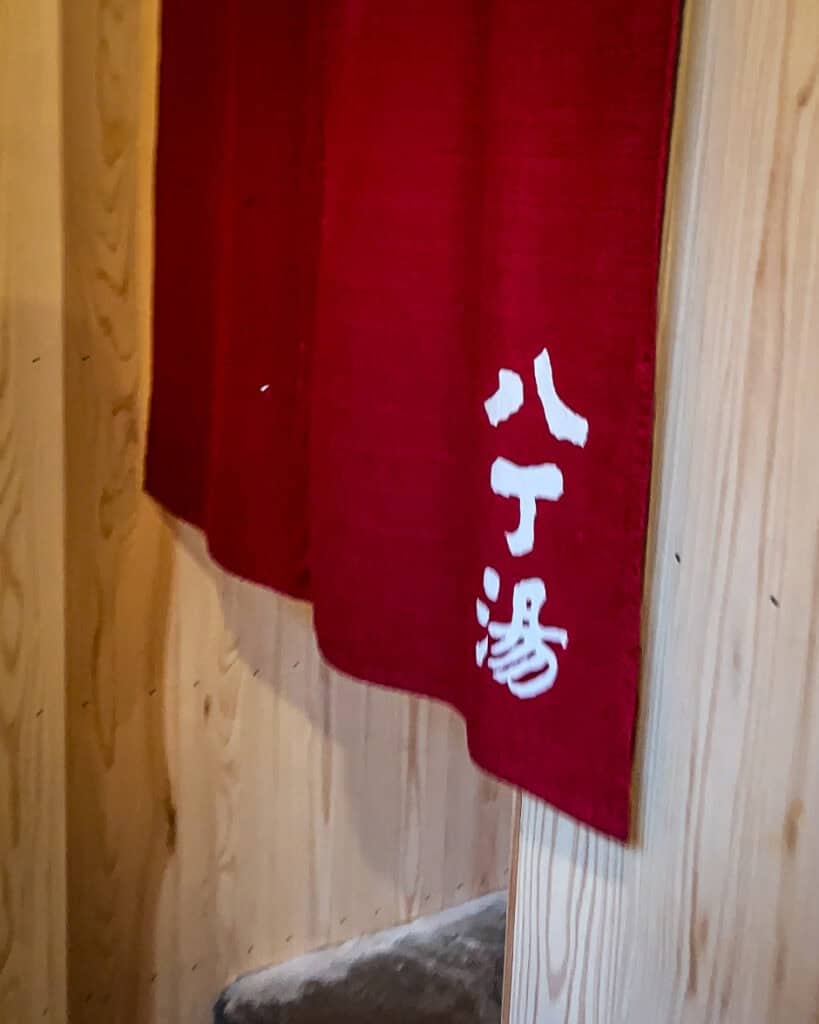
Changing rooms are often color-coded, with red curtains for women’s and blue for men’s. If it isn’t obvious which is which, you can ask someone or check the kanji labels:
- Women: 女 (onna)
- Men: 男 (otoko)
Traveling with kids? Similar to public pools and restrooms in the US, there’s an unwritten rule that young children can accompany their parents/guardians in either gender section.
Showers
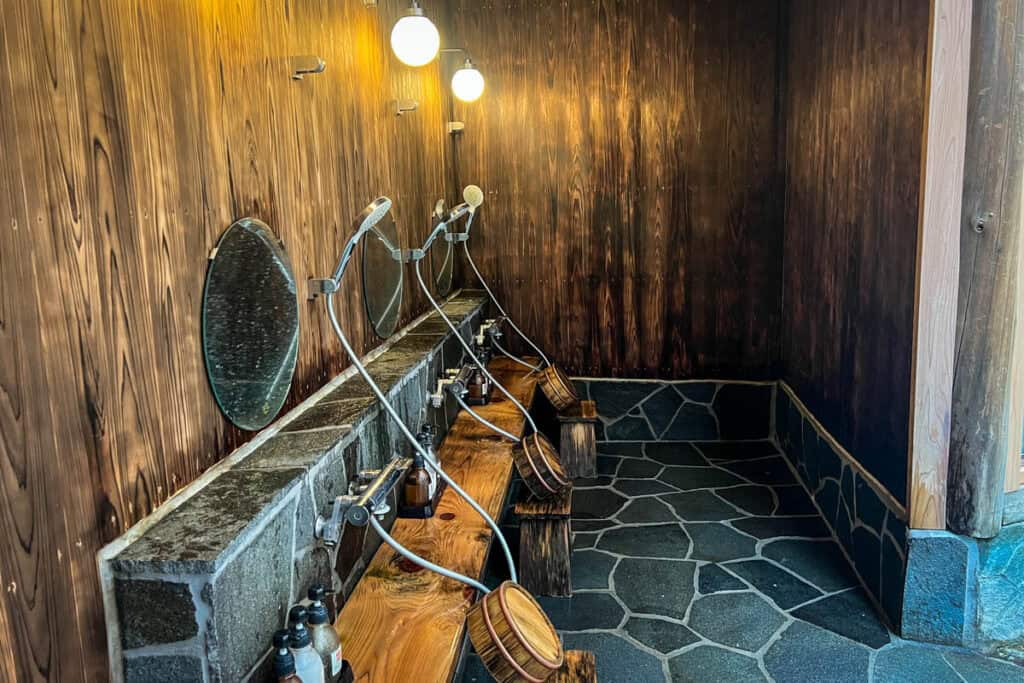
Showers are usually communal and located in the same area as the changing rooms.
In the shower, there is usually a small stool to sit on, a handheld sprayer, a bucket, and liquid soap and/or shampoo. Be sure to rinse yourself thoroughly before heading to the pools.
Note: Toilets are sometimes in a different area, so if you gotta go, make sure you check before you take your clothes off.
Pools
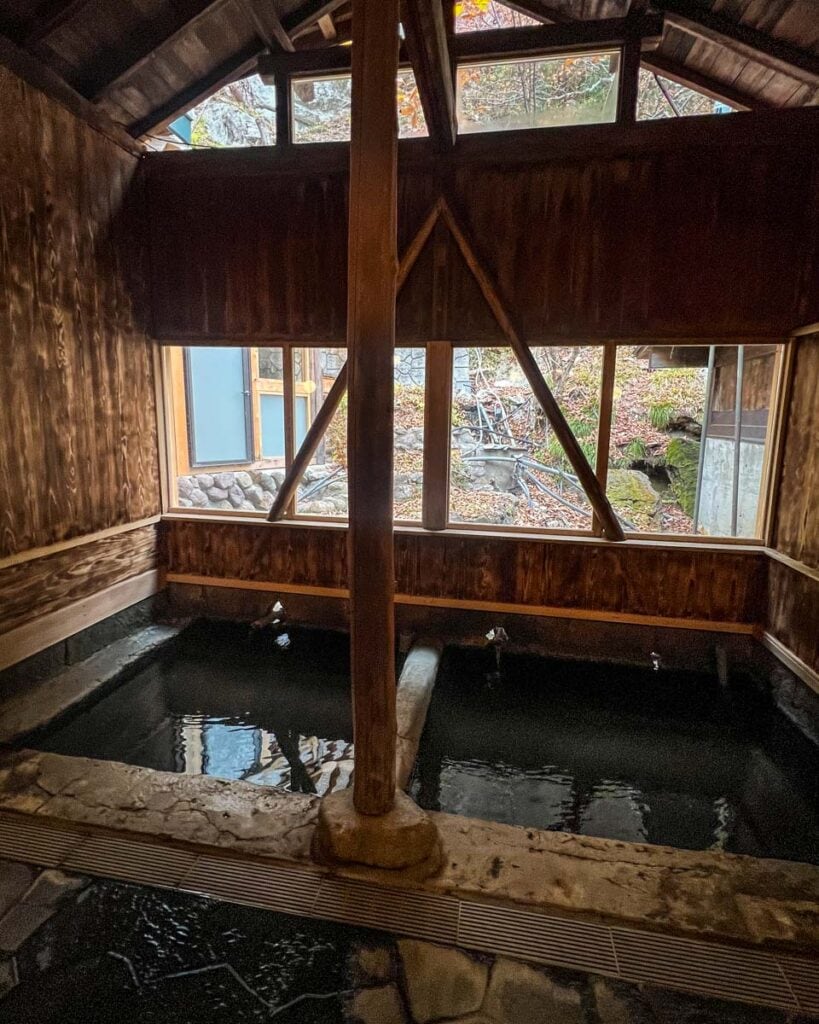
It’s optional to use the “modesty towel” to cover up while walking from the changing area to the bath. Just know that the provided towel won’t cover everything (think fig leaf on a Roman statue).
You can bring your water bottle into the bathing area, but no food, no alcohol, and absolutely no glass.
Pools are usually shallow enough to sit comfortably. Our 2-year-old daughter was able to stand in all the onsen we went to.
When you’re done bathing, head back to the changing room to get dressed. Mineral-rich onsen waters are believed to have benefits for the skin and body, so showering after the bath is not required.
Onsen FAQs
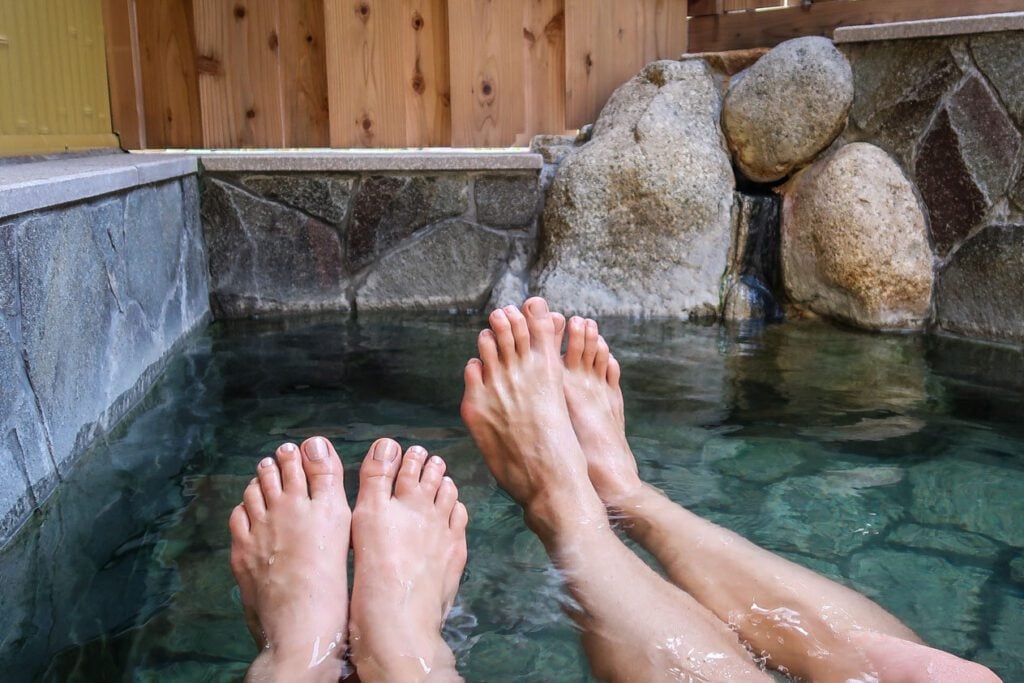
If you’ve never been to an onsen before, you probably have lots of questions. We’re answering some of the most common questions that people ask us below.
What’s the difference between onsen and sento?

An onsen is a naturally occurring hot spring created by geothermal activity, whereas sento are indoor pools with artificially heated water—essentially, public bathtubs.
That doesn’t mean that onsen won’t have manmade elements; most of them do. But in order to be officially recognized as an onsen, the water must be at least 25° Celsius at its source, and/or contain certain mineral properties.
Do I really need to be naked?!
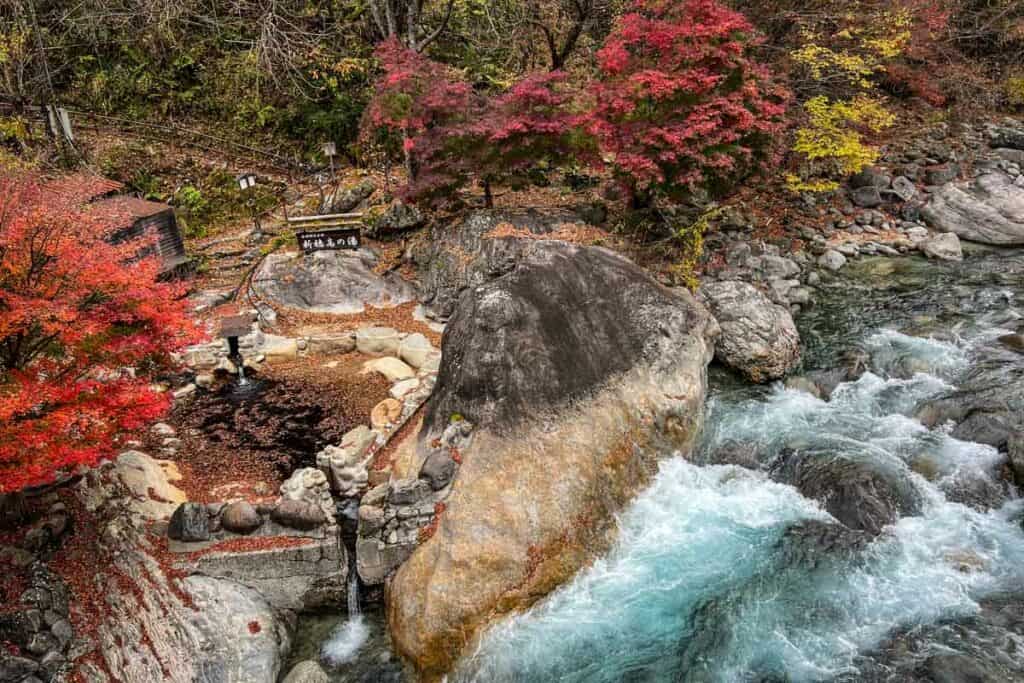
There may be the odd onsen or sento where guests can wear bathing suits. But for the authentic onsen experience, yes, you will be naked.
Nude public bathing is deeply rooted in Japanese culture and allows everyone to enjoy the onsen without polluting the waters.
If the idea of getting naked with a bunch of strangers is giving you pause, you’re not alone.
My thoughts were the same. But after experiencing a jjimjilbang (which is essentially the Korean equivalent to an onsen or sento), I realized that nobody cares what you look like. Yes, seriously.
It still may feel strange at first, but you get used to it. Trust me!
Are onsen family-friendly?
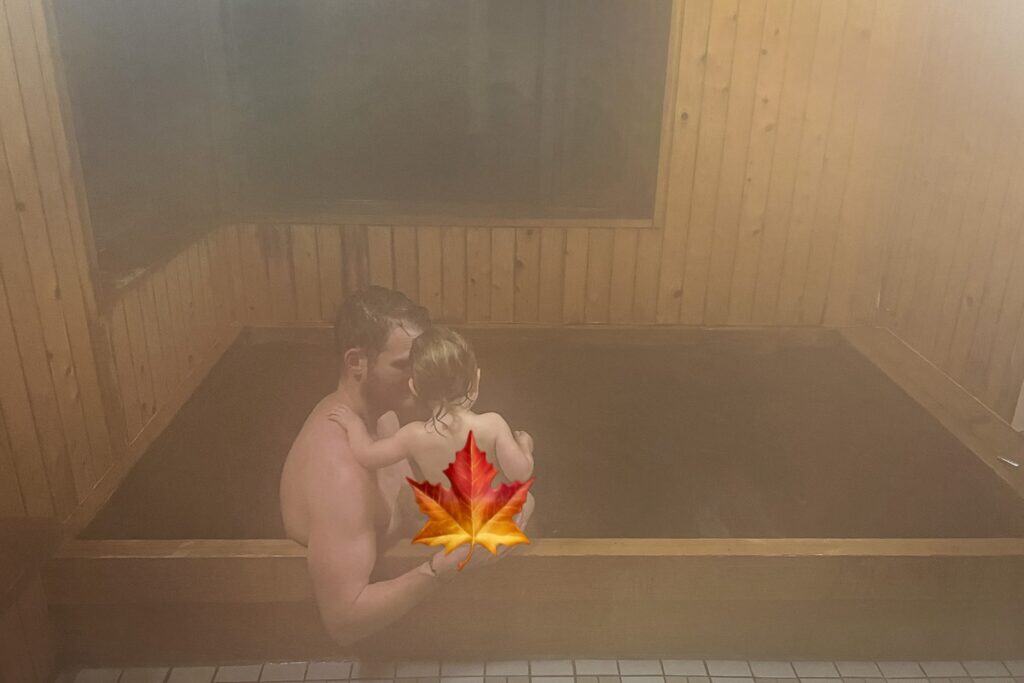
Yes, most onsen in Japan are family-friendly. In fact, in Japanese culture, going to the bathhouse with your family is a normal part of everyday life.
Personally, I think going to an onsen can be a great family activity. We brought our 2-year-old daughter to several onsen on our last trip and had a great time (she loved it!). That said, you do have to put a bit more thought into it than you would without children.
Visiting onsen with kids
We have more info on visiting onsen with kids that can help you decide whether this will be a good activity for your family, but here are a few things to consider:
- Gender separation: If you’re a hetero couple, you’ll likely need to split up and only one parent will be with the child.
- Swim diapers: Bathing suits are almost never allowed in onsen, including swim diapers. If you have a baby who isn’t potty trained, you may need to ask onsen staff about this.
- Nudity: Depending on your child’s age and upbringing, they may not feel comfortable being nude in front of their parents (or strangers), and vice versa.
- Water temperature: Depending on your child’s age, you may need to look specifically for onsen that will be a safe and comfortable temperature for them.
Still feeling uncomfortable with public nudity?
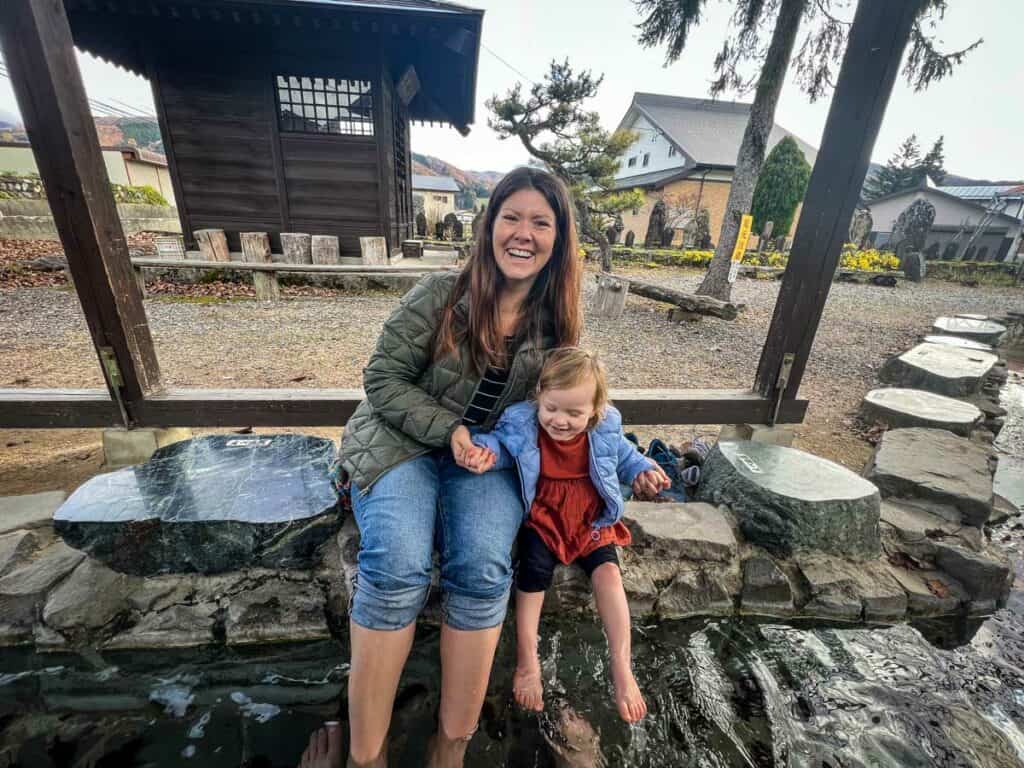
Bathing nude in an onsen is a deeply rooted part of Japanese culture, and it can actually be a liberating and memorable experience. You’ll quickly realize that no one is paying attention to your body. Everyone is focused on relaxing, and it’s all very matter-of-fact.
That said, we totally understand that everyone has their own comfort level. Maybe you’re traveling with teenagers, on a business trip with colleagues, or you’re just not up for it.
Here are a few alternatives to nude bathing that will let you dip a toe into onsen culture (literally!) without going full monty:
- Book a private onsen: Some hotels and ryokan offer private baths (either in-room or reserved by the hour). This is the perfect way to experience onsen in Japan without baring it all in front of strangers.
- Try a foot bath: You’ll often find free foot baths outside of train stations and other public areas. They’re heavenly after walking around all day, and the only clothing you’ll need to shed are your socks!
- Look for pool resorts that allow swimsuits: While not technically onsen, some resorts like this hotel in Hakone offer hot spring-style soaking in swimsuits, which will allow you to experience a similar vibe.
Plan your trip to Japan
After 3 trips (and counting!), we’ve fallen head over heels for Japan—and we’ve created TONS of resources to help you plan your dream trip. Start with our Ultimate Japan Travel Guide and be sure to check out these helpful articles:
- First time? Our Japan Trip Planner walks you through everything you need to know.
- Use our Japan Rail Pass guide to determine if getting a train pass is optimal for your trip.
- Here’s our curated list of the best things to do in Japan—from iconic sights to once-in-a-lifetime experiences.
- Not sure where to go? Our Japan itinerary ideas will help you map it all out.
- Foodies, rejoice! This guide to what to eat in Japan will have you drooling before you land.
- This guide to what to wear in Japan (and what not to wear) will help you blend in.
- Use our ultimate Japan Packing List to make sure you don’t forget anything.
- Before you go, brush up on these essential Japan travel tips (including major do’s and don’ts!).
- Avoid awkward moments by brushing up on Japanese etiquette.
Still have questions? Drop us a comment—we LOVE helping travelers plan unforgettable trips to Japan!
Perfect Japan itinerary
Want the perfect itinerary planned for you?

If you don’t have a ton of time to spend planning your Japan itinerary (or you just don’t find travel planning fun), we’ve got something you might be interested in…
We created the ultimate done-for-you Japan itinerary that is packed full of all sorts of tips we’ve gathered from 3 trips to Japan as well as literally hundreds of hours of research (no exaggeration).
We have both an off-the-beaten path route as well as a classic itinerary that hits the top attractions (perfect for your first visit to Japan!).
Don’t miss your chance to grab our Japan packing list!
This FREE PDF download includes everything you’re going to want to pack for your Japan trip, including what NOT to bring, plus tons of insider tips!
Just enter your email and we’ll immediately send you access instructions!
Save this article on Pinterest for later!
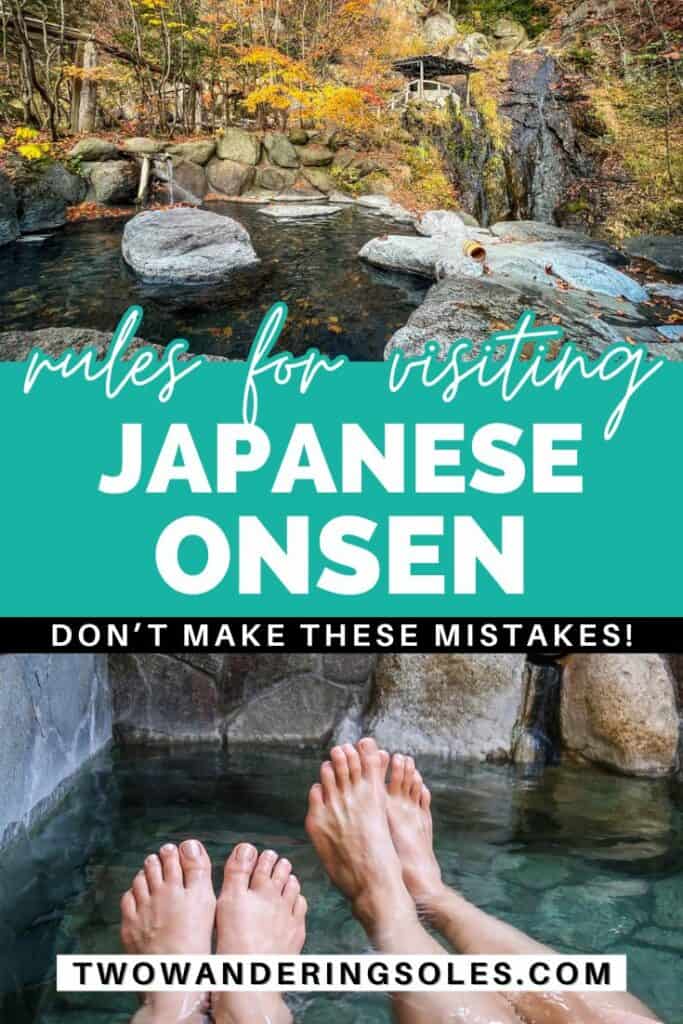
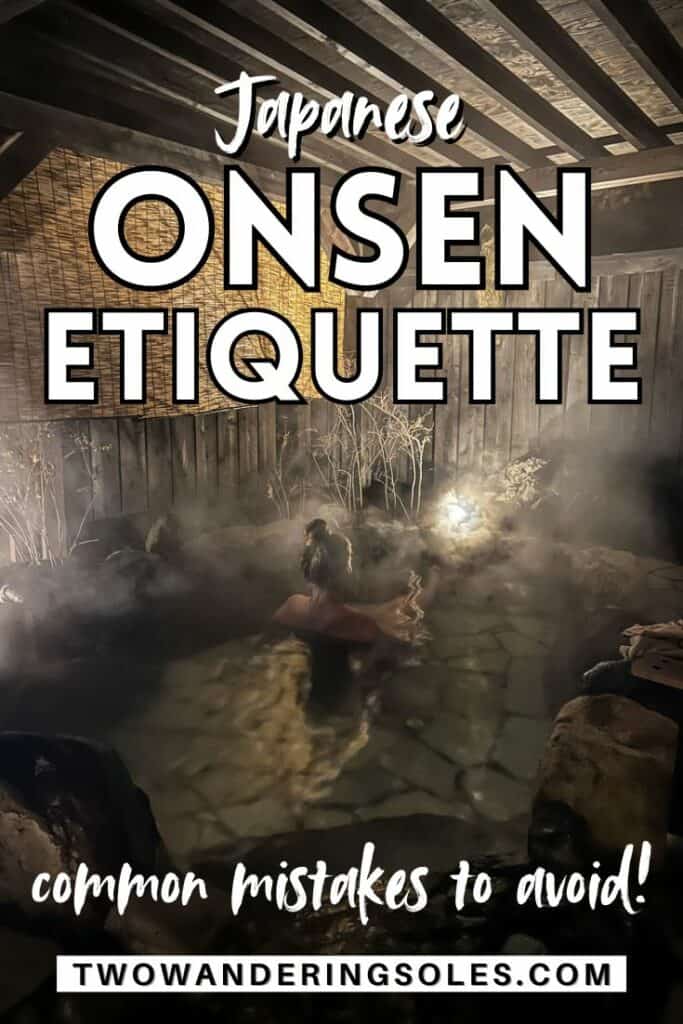
We want to hear from you!
Have you tried visiting an onsen in Japan? What was your experience like—or what’s holding you back? Drop your thoughts or questions in the comments below and we’ll do our best to get back to you!

